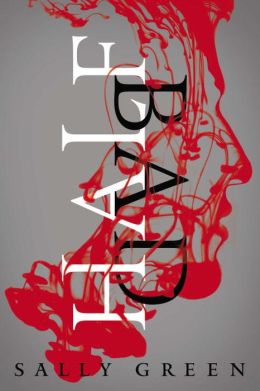Almost nothing makes me happier than stacks of thick books waiting to be read—nothing, that is, except reading them. And booksellers have stacks, totebags full, book cases and back rooms overflowing with a riot of ARCs (advance reading copies). Not to mention a laptop full of Adobe Digital Editions. It’s an abundance of riches with a sad corollary: there is no way to read them all.
Figuring out which ones to read and which not to is a combination of whimsy, experience, and research. I reach for the titles by authors I love to read, for books that have been getting starred reviews and bookseller buzz, those the reps stick special Post-Its on because they love a book so much they don’t want it to get lost in the crowd, and those whose covers simply lure me in. (Yes, we are a visual culture, and yes, we judge books by their covers. Not only by their covers, but of course we do.)
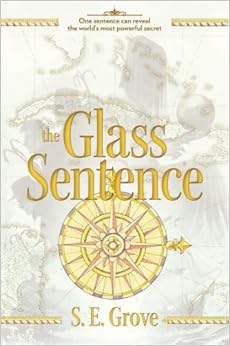
I often avoid the blockbusters, knowing that they’ll sell themselves. But if I’m in love with the series, of course I can’t resist. Sometimes I’m perversely drawn to the most obscure books, the ones I think two or three of my customers at most will be interested in; I think it’s a form of defiance, a way to carve out some pleasure reading that isn’t about work in any way.
And I’m drawn to the books that don’t look or seem from their reviews to be like anything else on the shelf. Freshness is a hot commodity when you have been immersed in a literary field for almost 20 years.
I know a book is good when I am immune to the siren song of all the other books waiting for me.
Still, there is the guilt. And the reproach of the unread stacks all around.
The first two books shown in this post, Viking’s HALF BAD by Sally Green (loved by a bookseller friend) and THE GLASS SENTENCE by S.E. Grove (also recommended by a fellow bookseller), are my next two reads. Currently, I’m on Mount Elbrus with Jordan Romero, author with Linda LeBlanc of NO SUMMIT OUT OF SIGHT: THE TRUE STORY OF THE YOUNGEST PERSON TO CLIMB THE SEVEN SUMMITS (Simon & Schuster). The kid climbed Kilimanjaro at age 10 and Everest at age 13. Cannot stop reading.
After that, I’m not sure. I’ve got hundreds of books clamoring.
What do YOU recommend I read next? And how do you folks in bookselling triage your stacks?
Monthly Archives: February 2014
It’s More Than Shopping Local
Josie Leavitt - February 27, 2014
I am discouraged. I know I often cheerlead for independent bookstore, but I’ve overheard one conversation too many this week about people and their Kindles. Two women at the gym were discussing how to find a “lost” book on their device. I resisted the urge to tell them that they don’t really own anything on the Kindle: Amazon can take it away anytime they feel like it, as they did with all MPS titles a few years back. This conversation has really stayed with me and made my shoulders slump. Perhaps it’s the cold that has set in, but some days I fear the bookstore will go the way of the record store. Some of our younger readers might be wondering, just what is a record store?
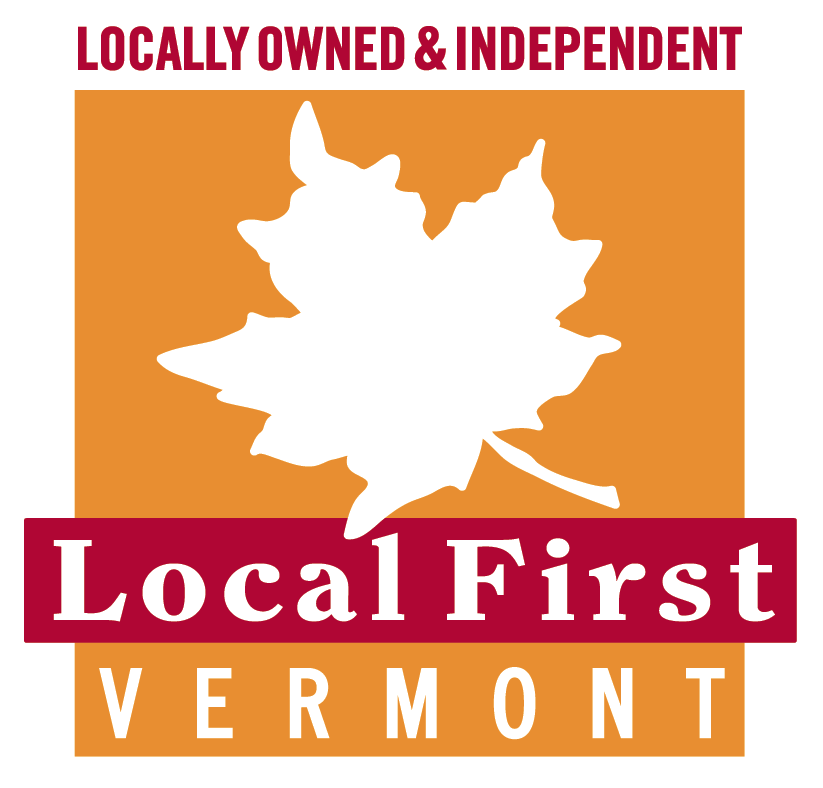 I cannot stress this enough: you must shop at the stores you want to stay open. I know I said this in December, but it’s even truer now in the long stretch of winter before Easter, when book buying budgets are tight for everyone. Yes, it’s easy, and probably fun, to buy books on line (I wouldn’t know, I’ve never done it) but there will be a price for the convenience. I’m just going to say this: Amazon is a company that is out only for itself. Their business model is one based largely on trying to beat the competition by selling books at a loss to lure you into the site to buy more things that are not so steeply discounted. Most other businesses I know cannot sell their products at a loss. We don’t really have cool gadgets. The American Bookselling Association tried to get us all gadgets to sell, but we came to that danc party a little too late and that never really took off, as Amazon and Apple were already deeply entrenched in the public’s eye as the devices to get.
I cannot stress this enough: you must shop at the stores you want to stay open. I know I said this in December, but it’s even truer now in the long stretch of winter before Easter, when book buying budgets are tight for everyone. Yes, it’s easy, and probably fun, to buy books on line (I wouldn’t know, I’ve never done it) but there will be a price for the convenience. I’m just going to say this: Amazon is a company that is out only for itself. Their business model is one based largely on trying to beat the competition by selling books at a loss to lure you into the site to buy more things that are not so steeply discounted. Most other businesses I know cannot sell their products at a loss. We don’t really have cool gadgets. The American Bookselling Association tried to get us all gadgets to sell, but we came to that danc party a little too late and that never really took off, as Amazon and Apple were already deeply entrenched in the public’s eye as the devices to get.
Here’s the thing: practically every day I have a customer who is visiting from a town where there is no longer a bookstore. These are sad people. But then they enter the store and smile. They visibly relax. They are home. This feeling is impossible to quantify in business terms. But this is what needs to happen. It’s more than shopping local. It’s shopping where the passion is. The passion for books, or wine, or music, or toys, etc. This needs to be the next wave of the independent store campaign. Do not misunderstand me: I love the shop local movement. It has been a boon to business in many ways, but it needs to shift because there is no urgency there. Urgency doesn’t need to be negative, it just needs to inspire action.
Sadly, it’s often not until a store is gone that folks realize how much that store was entwined into their lives and they feel the distinct lack of it. So, be preemptive and shop where the passion lives on the shelves every day. Shop where people work because they can’t not work at a bookstore. Shop where conversations are about celebrating an art form (and this is where Amazon can’t hold a candle to a bricks and mortar store). So, shop at all the stores you want to stay open, because once they close, they’re gone.
Bleak Books: The Best, the Bad, the Broken
Elizabeth Bluemle - February 25, 2014
As a reader and as a bookseller, I think about this question a lot: why are some bleak books compelling and memorable and worthwhile, while others make you regret the hours — and the erosion of your soul — wasted upon them?
I used to think it was a matter of hope, some sense at the ending that redemption was, if not at hand, at least possible. And maybe that’s true, but I’m not sure it is. I’m not certain I could make that case for some of the books I’ve found deeply affecting.
My reading tastes don’t generally include a whole lot of death. I have zero interest in novels about serial killers, or mysteries with their endless parades of dead women. And yet, some of the most powerful, memorable books I’ve ever read are violent. Harrowing. Chris Cleave’s Little Bee stays with me years later. Cormac McCarthy’s The Road is a stunner. This weekend, I finished reading an extraordinary debut novel, The Kept by James Scott, and while it was totally different from The Road, I found it similarly riveting and unforgettable. (Run, don’t walk, to read The Kept if you valued The Road. Not a book for kids.)
Perhaps it’s the rendering of the characters themselves, and not the ending, that separates a good bleak novel from a poor one. When the characters are fully developed humans, flawed and trying, as terrible as their choices may be, we care about their journey.
In YA books, Adam Rapp’s 33 Snowfish remains one of the most searing, jagged, bleak and beautiful books I’ve ever read. I was truly grateful for the flicker of hope it provided at the end. Patrick Ness’s Chaos Walking trilogy is brilliant; at least, I can speak for the first two books. I cannot yet bring myself to read the third; I am afraid of its potential to swallow me whole. The author is masterful, and I find myself too invested; he is too good at making me feel the bleakness. And yet, though I avoid Monsters of Men’s possible bleakness, I count it as most worthy.
Books for teens must earn bleakness very carefully. We owe young people hope; it is usually self-indulgent to make them wallow in our adult disappointments. The bad bleak books do this, I think.
Maybe a good bleak book is one that makes us face some of the harder human truths, makes us think, disturbs us — upsets our simple preference for rewarded virtue and punished villainy — in important ways. The good bleak books deepen our appreciation for humaneness, mercy, compassion. Perhaps the good bleak books shatter our hearts, but show us how to start putting them back together again.
What do you think, those of you who have found yourself loving some bleak novels and hating others? What separates the blazing ones from the sour, empty ones?
Vacation Reading Double Standard
Josie Leavitt - February 24, 2014
The next few weeks will see many kids from my area on vacation. New York state kids just finished, Vermont kids are at the beginning of their winter break. These two weeks are always busy at the bookstore with folks stocking up on vacation reading and activities for travel.
I’ve noticed a trend this year: parents are buying “beach reading”, the books thought of as easier or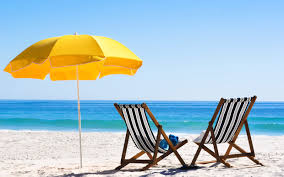 somewhat more entertaining reads than they would normally read. I totally understand the allure of the beach read: they’re fun, oftentimes racier than your book group picks, and they don’t require too much brain power so you can just pick up your book with your afternoon umbrella drink and not miss much. Non-fiction readers might be drawn to police procedurals on holiday, etc. Kids seem to be pressured into buying books that are a stretch, not books that are necessarily fun. I’m not sure this is fair. Why are the children being held to a higher standard than their parents?
somewhat more entertaining reads than they would normally read. I totally understand the allure of the beach read: they’re fun, oftentimes racier than your book group picks, and they don’t require too much brain power so you can just pick up your book with your afternoon umbrella drink and not miss much. Non-fiction readers might be drawn to police procedurals on holiday, etc. Kids seem to be pressured into buying books that are a stretch, not books that are necessarily fun. I’m not sure this is fair. Why are the children being held to a higher standard than their parents?
Sadly, I think it’s because parents are fearful that kids shouldn’t read things that are easy because then they’re not reading on or above grade level. Reading sometimes seems to be all about challenge and less about enjoyment. Do not misunderstand me: I think all readers should try to stretch themselves, but sometimes, just as adults do, kids might benefit from some potato chip reading as well. There is something to be learned from all kinds of reading, and kids, just like adults, like to revisit old friends by rereading or by going down a level or two. And reading levels won’t plummet if a kid rereads a favorite book from last year. Kids are challenged all day at school with so many things that sometimes it makes sense to let them take a break and read something that’s either just plain silly fun or comforting, even if it’s an easy read.
So, if you’re lucky enough to go holiday, what are you and your kids going to pack to read?
Untold Fairy Tales at the Art Supply Store
Elizabeth Bluemle - February 21, 2014
The only kind of retail store I would want to open besides a bookstore is a stationery /art supply store. I have a huge weakness for thick, toothy paper and glass pots of ink, tidy rainbow displays of colored pencils and watercolors, a wide array of acrylics and oils and watercolors and brushes, left-handed nibs and microscopically fine pens, soft piles of handmade papers hanging over dowels, and all of those delicious sketch pads, waiting to be filled. Plus, goache.
What I wasn’t expecting when I wandered into the Artists’ Medium store in Williston, Vt., was to find, well, art. Especially art that made my children’s book lover’s heart beat. There was a table filled with delicate, sometimes haunting prints that hinted at stories untold, fairy tales and legends just waiting for the right words. The artist was listed as Polanshek of the Hills.
I picked up three of the prints, two for gifts and one to keep. As I checked out, the young staffer at the counter ringing up another customer glanced down at my purchases and said, “Hey, thanks.”
“Are these yours?” I asked, surprised.
“Yes,” she said.
“I pictured you older,” I confessed. She was all of, perhaps, 23.
“Most people do. Especially because I go by Polanshek of the Hills. They usually think I’m a guy.”
Truth be told, I had actually pictured the artist as a woman in her 40’s, someone with a rich north woods life, maybe someone with a wool poncho and sensible, muddy boots outside her studio in the forest. Instead, she looks like a student. She probably is one.
I told her how much I liked her artwork, how it evoked fairy tales I hadn’t yet read. Her birds hold conversations. Her mice and deer are wrapped in mysterious, decorative capes, or cocoons, in a series of images she calls the “Quilted Forest.” I want to see Jess Polanshek’s work in a picture book, or an illustrated novel. She is just beginning her artistic career, and is already so talented.
It turns out that Jess Polanshek HAS illustrated a children’s book, Edward Saves the Forest (available on her website, published via Createspace). It is lovely, but uses a simpler, less detailed illustration style than the work of hers that so arrests me.
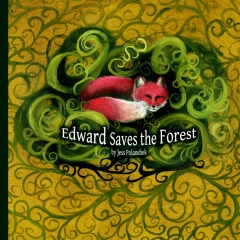
What a delight to wander into an art supply store and discover a young person with so much artistic promise. I can’t wait to see where her art takes her. And I’ll get to pick up some watercolor paper, Rapidograph cleaner, and size 2 brushes at the same time.
Flying Pig 1, Amazon 0
Josie Leavitt - February 20, 2014
We have been struggling for the past few years to win back a library account at one of the local senior living communities, Robin Bay. They had been doing their book buying from us from our very early days in the late 1990s through about 2006. We had noticed that the orders were getting smaller and smaller until they just stopped outright. I finally got the courage to ask the acquisitions person what was going on.
She was sheepish, but I assured her it was important for us to know why they left, so we could work hard to get them back. As the library budget tightened and the seniors’ ease with computers increased, they shifted most of their purchasing to Amazon. We were disheartened, to say the least. There was little we could in the face of the library getting upwards of 46% off the mostly bestsellers they were buying. Every year we talked about indies and why they’re good for communities and enrich lives. How we collect and pay sales tax, how more of the money spent in our store (.68 cents versus .32 cents) stays in our community. They were having none of it.
Every couple of months or so, we’d be giving them a booklist and asked to research prices. We’d diligently do the work and then not hear back. And after pricing the list on Amazon, we saw why. The discounts that they were offering were just absurdly low. Hardcovers that retail for $28 being sold for $12. I can’t get better prices from the publishers. So, we stopped fighting and went back to selling books to other people. And a strange thing happened.
We started doing more business with residents of Robin Bay than ever before. We delivered a lot to those who no longer drove. We welcome their van to our store twice a month with eager book buyers. Then several longtime customers moved into Robin Bay and suddenly we had a cheerleading section. And that’s all it took. Once people who really knew us and how much we cared not only about books but about them, we were given a chance to compete with Amazon on 38 books.
We got creamed by their discounts on about 25 books, came in better on seven, and were within in cents of each other on the remainder. All told Amazon was about $100 less than we could do. They chose us, because as Julie, the acquisitions librarian said, “It matters what happens in our town and we are all part of it. And this is a small price to pay for backing up what we say do: shop local.”
We are thankful for the order and will deliver it Friday when it all comes in.
When Customers Sell Books
Josie Leavitt - February 18, 2014
Overhearing customers talk about books at the bookstore is often the best part of my day. From little kids who shout out to each other, “Read the one about the rabbit!” to adults who start chatting about favorite authors and hold impromptu book groups in the aisle, there is something so lovely about this kind of sharing.
Nothing sells books better than passion. When customers are moved enough to converse with strangers at the store about a book, people tend to listen and buy what they’ve just been talking about. Yesterday, a very good customer came in and saw a family in the picture book section. She went right over to them and asked, “Have you seen this book, Journey? Follow the red and purple throughout the book. It’s simply tremendous. It would be great for your little girl.” And she walked away after handing them the book.
They thanked her and continued browsing for a birthday present for someone else in the family, leaving the little girl to her own devices. I was shelving in that area and was very interested to see what the girl would do. After all, I’m sure it’s not every day that a total stranger starts talking to her about books. She came in the store boisterously, but she got quieter and quieter.
The little girl was very curious and started poring over the book. She sat on the carpet absolutely riveted. Her mom and grandmother looked on as if something magical had happened.
And it had.
Please Bring Back Crinkleroot!
Elizabeth Bluemle - February 14, 2014
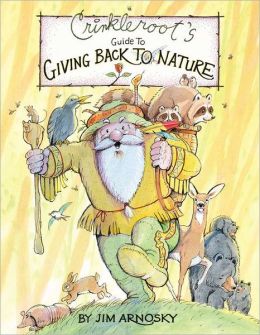
The other day, a customer came in to pick up a book she’d ordered. To my delight, it was a recent (2012) release of a book by Jim Arnosky, Crinkleroot’s Guide to Giving Back to Nature, one of only two Crinkleroot titles still available. The Crinkleroot books were staples at our bookstore when we opened and for several years thereafter. When they went out of print, our customers complained vocally. These nature books had a unique approach and appealed to so many people; children, teachers, and parents gobbled them up.
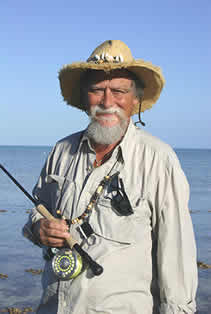
(from www.jimarnosky.com) We met Mr. Arnosky once, many years ago. He does look a bit like his character, Crinkleroot!
Jim Arnosky has contributed scores of fabulous books to the world that introduce young and elementary-school-aged children to nature, lots of which are still in print. Even though many beautiful Arnosky books are available, I also really want Crinkleroot back, too. That bearded guide took kids into swamps and forests and deserts, and taught them about the changes that happen in the natural world as seasons dramatically shift. The Crinkleroot books provided perfect beginning portals to learning about birds and mammals and fish, animal tracks and trees and so much more—fourteen titles in all. I still haven’t found ideal substitutes for Crinkleroot’s 25 Birds Every Child Should Know and Crinkleroot’s 25 Fish Every Child Should Know. Drives me crazy.
You know those beautiful little stores or restaurants you love, that are gems? And how sad and helpless you feel when they close, and how, years later, you still feel a pang every time you have a hankering to visit that place? That’s how my customers (and I) feel about the Crinkleroot books.
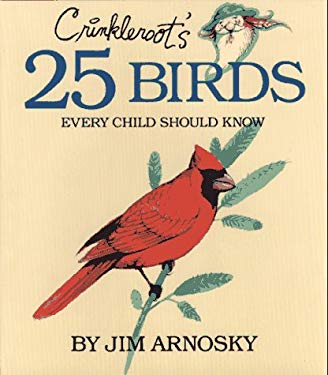
After all, these are award-winning books by a nature expert. From his website: Jim Arnosky “has written and illustrated 132 books on nature subjects and has illustrated 46 other books written by various authors. … He has been awarded the Christopher Medal, Orbis Pictus Honor, ALA Gordon Award, and Outstanding Science book awards from National Science Teachers Associations.” Come on. If nothing else, doesn’t that just scream Common Core?
I am grateful that Crinkleroot’s Guide to Giving Back to Nature is in print. Now, pretty pretty please, Putnam or Simon & Schuster or another enterprising nonfiction publisher, consider bringing back the others. Perhaps combining the Birds/Fish/Mammals/Other Animals volumes together, and doing something similar with the habitat books? And the tracking books? A set of four or five Crinkleroot volumes that hold all 14 titles within their pages would be lovely. Just saying.
Because I know Crinkleroot would be able to tell me, with just the right amount of detail, no more and no less, exactly how the woodland creatures of the northern forests are waiting out this snowfall.
Bookselling in Bad Weather
Josie Leavitt - February 13, 2014
As much of the country seems gripped in an unusually bad winter, I am reminded how bookstores are havens from the storm. Whether it’s a snowstorm, icy roads, flood, or even just a bad thunderstorm, bookstores tend to be the place where folks gather for information, commiseration and how-to books. Weather is something we all have in common, and if you’re in New England, it’s something that gets talked constantly, although I’m sure every region spends just as much time chatting about it as we do. I’m fairly certain people in the South have been talking about ice for weeks now.
Bad weather binds us together. I love a big snowstorm when brave folks stop at the store on their way home to stock up on books just as they do with milk, eggs and butter. Storms and the thought of getting snowed in make people nest, and the bookstore sees many parents planning ahead for bored kids by getting a stack of new books for the family. Not only are books comforting, but they can be enormously helpful. I’ve sold a lot of science and weather books this week. Kids seem to be asking weather-related questions that are fairly hard to answer. Why is it so cold this year compared to last year? How come we’ve had so little snow? Kids ask good questions that are often stumpers. They want to understand things like climate change (if they’re older, although younger and younger kids seem to ponder this as well) and why it can rain in December when it’s 30 degrees.
Every interaction with customers during a weather event pretty much begins with gathering news from outside. I will always ask: How is out there? Are the roads okay? What have you heard? The downside of this is by the end of the day I am just about ready to shoot myself if I hear one more word about the wind-chill. But I still ask the questions because I love hearing news about what it’s doing outside. Yes, I can look out the window. Heck, I can even go out (but why would I?) and see for myself, but hearing from someone who has just been on the road is like talking to an advance scout. As a store owner, I need to know how the roads are. I never want any staffer to stay longer at the store than is safe. Everyone needs to get home in one piece and not have it be a harrowing experience. Yes, the bookstore is important, but I’m a fan of closing if being open just increases someone’s chances of driving off the road. After the weather clears people stream in if they’ve been cooped up for awhile. They shake snow off their boots and seek the comfort of their favorite section. Sometimes, especially at the old location in Charlotte, people would cross country ski or snow shoe to the store. People share stories: I lost power for two days, my plow guy got stuck, a tree almost fell on the house, etc. Kids in scratchy snow pants stream in, shedding clothes in various sections as they start to overheat.
One of my favorite things about the bad weather are the traditions, often book-related, that families have during bad weather: reading The Wind in the Willows, or The Long Winter or having a whole-family read aloud by flashlight. And honestly, what is more cozy than curling up with a great book, a hot chocolate being surrounded by the people you love?
Kids Read the Darndest Things….
Elizabeth Bluemle - February 11, 2014

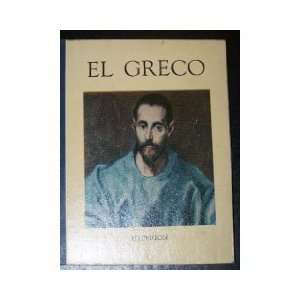
Tracey Campbell Pearson thinks her beloved lost book (which had a cover like this) might have been from the Hyperion Miniature Art Book Series, published in the late 1940’s or 1950’s.
My own nephew, as a little guy, was predictably fond of books about trucks and construction sites and other typically popular young-boy fare. But for his fifth birthday, he didn’t want a celebration featuring construction vehicles or pirates or ninjas or superheroes. Instead, he insisted on hosting an Andy Goldsworthy party. He’d become fascinated with the artist’s outdoor constructions in a book on his moms’ coffee table, which led them to the fabulous Rivers and Tides documentary about Goldsworthy’s work. So — in late February, in snowy cold Vermont — a bunch of little boys and girls bundled up in snowsuits and mittens and went out into the backyard to make snow and ice structures. It was pretty great.

When I was a school librarian in New York City, there was a kindergartner who used to spend hours looking at old photography books of the city. He was particularly fascinated by the trains running through the city, and the layout of the streets. This boy and his dad went on walks through the city, finding and tracing remnants of long-lost train tracks. One day, Griffin was looking at a spread in one of the big old books with sepia photographs. I think it was an aerial view, but not from too high up. (I can’t remember which exact streets he identified, so they are indicated with “XX” in the following quote.) Griffin said, musing, “I think this must be the intersection of XX Avenue and XX St., because XX Avenue went in both directions back then, but XX St. was one way, and there are train tracks behind here.” We flipped to the photo credits section and sure enough, he was right. I may not remember any of the street names he mentioned, but I sure remember being astonished at his patient assessment of the photographs and his thoughtful deductive analysis.
Now, I am fairly certain that, were a customer to ask me for a great recommendation for a three-year-old, and I handed her The Art of El Greco (or, for a five-year-old, some Andy Goldsworthy or a book of old Manhattan photos), I would encounter some pretty skeptical looks. Rightly so. But the truth is, we never know what will reach into a child’s heart and soul and imagination and take root. This is why it’s so valuable and important to expose children to all kinds of books, to give them not only children’s books, but interesting books for older readers — coffee table books of art and people and far-off places — and have them in our homes, our doctors’ offices, our libraries and DMVs and everywhere little kids hang out without a lot to do — readily available. And it behooves us to do our best to get those books into homes that can’t afford them.
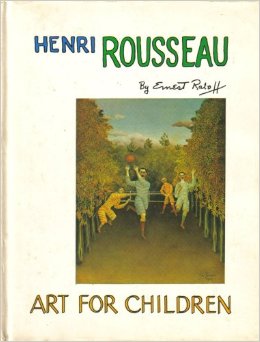 Something else I take from these anecdotes is a reminder that nonfiction is just as important for very little children as for older independent readers. I need to remember that when I’m hand selling books to parents and grandparents. I’m not sure El Greco would ever have occurred to me to recommend, but I do remember loving a wonderful children’s art book series my parents gave me one volume at a time. My favorite was the one on Henri Rousseau. I lived in its pages. (A quick Google search led me right to it: Ernest Raboff’s “Art for Children” series, once published by Doubleday, now OP. Yoo hoo, Random House!)
Something else I take from these anecdotes is a reminder that nonfiction is just as important for very little children as for older independent readers. I need to remember that when I’m hand selling books to parents and grandparents. I’m not sure El Greco would ever have occurred to me to recommend, but I do remember loving a wonderful children’s art book series my parents gave me one volume at a time. My favorite was the one on Henri Rousseau. I lived in its pages. (A quick Google search led me right to it: Ernest Raboff’s “Art for Children” series, once published by Doubleday, now OP. Yoo hoo, Random House!)
Really, it makes sense. Most children are visual creatures; there’s a reason the earliest books are picture books. Art and photography books are, after all, picture books – albeit of a different kind. They introduce children to worlds beyond their experience, both real and imaginary, sparking imagination and, perhaps, lifelong passions.
Readers, what unexpected book obsessions did you have as a child, or have you encountered with the kids in your lives?

